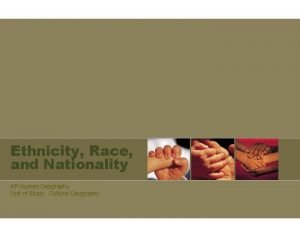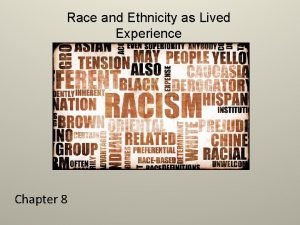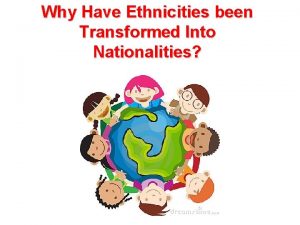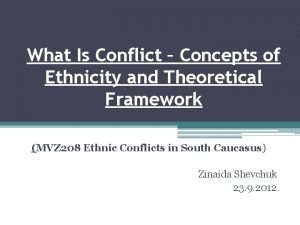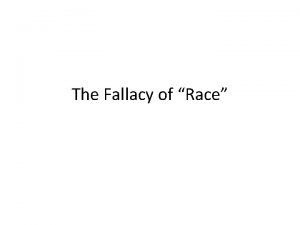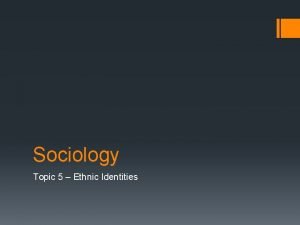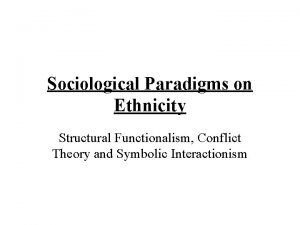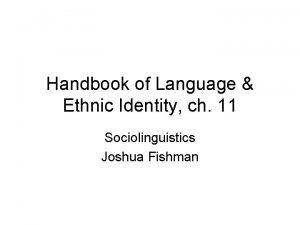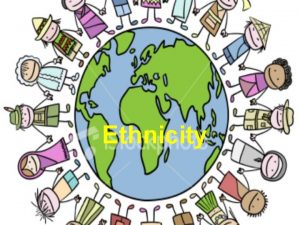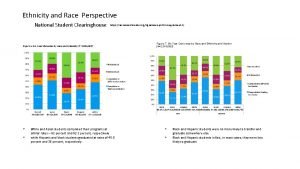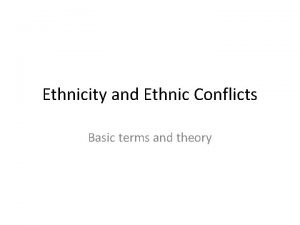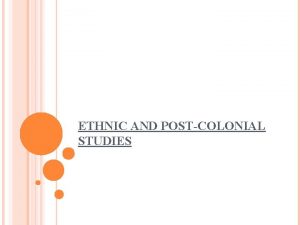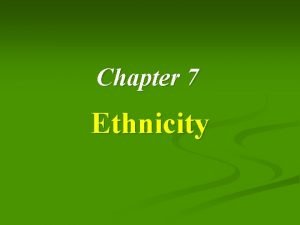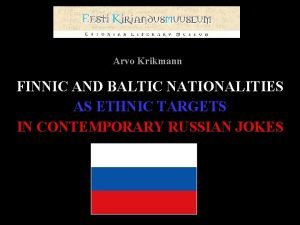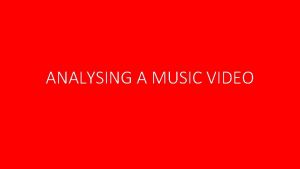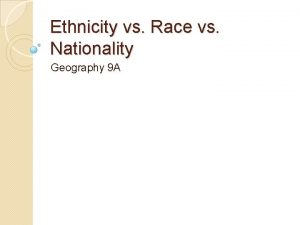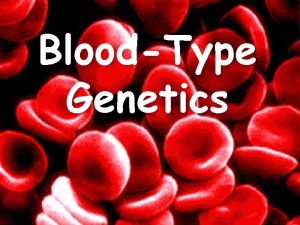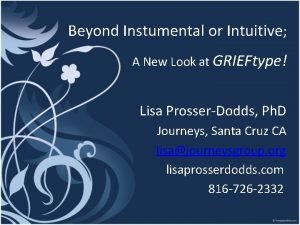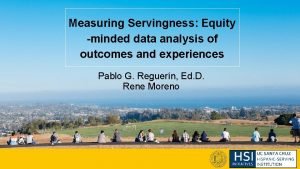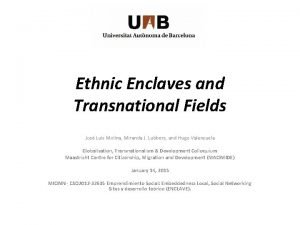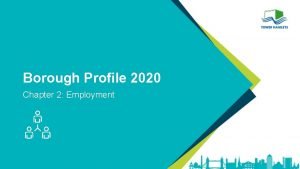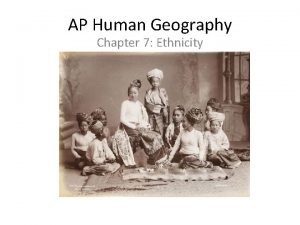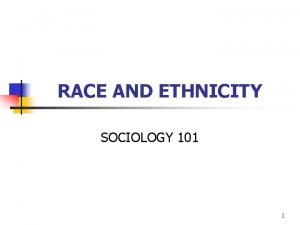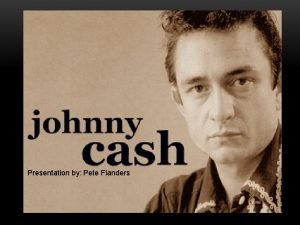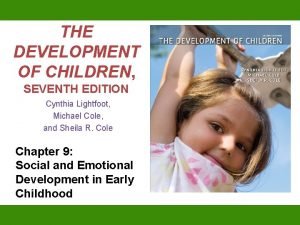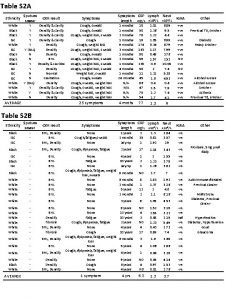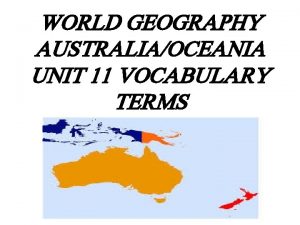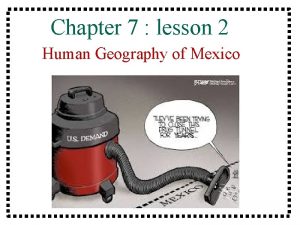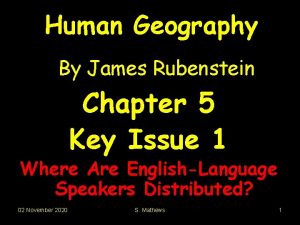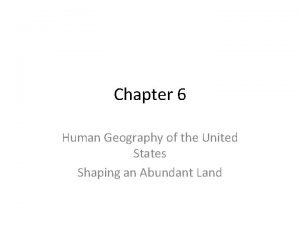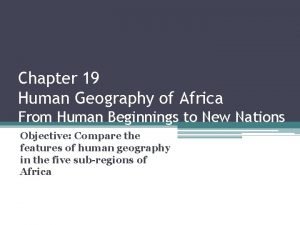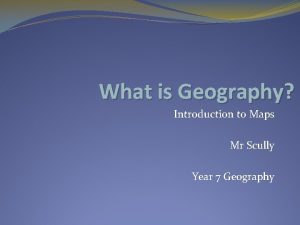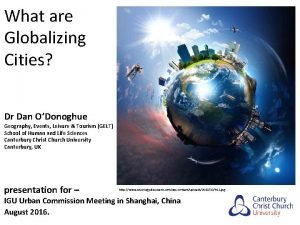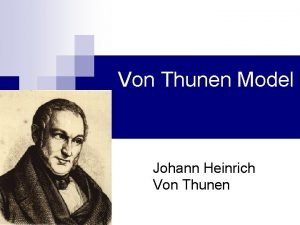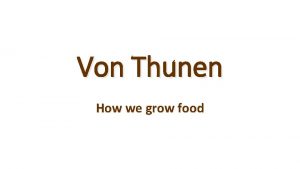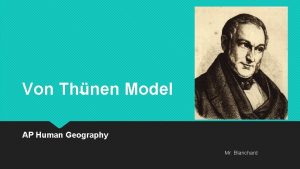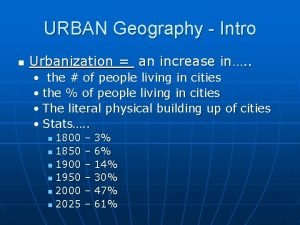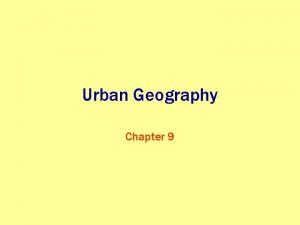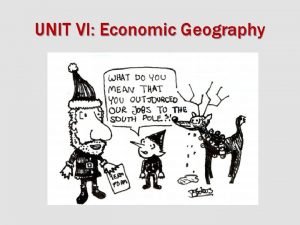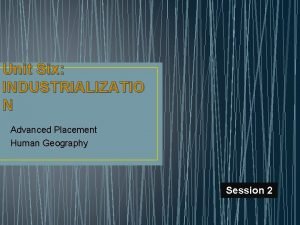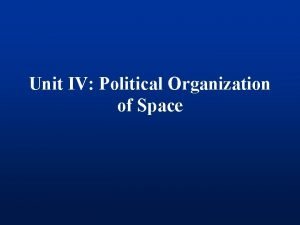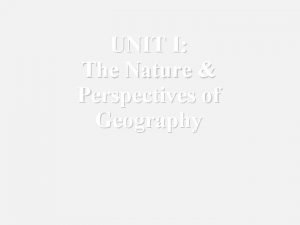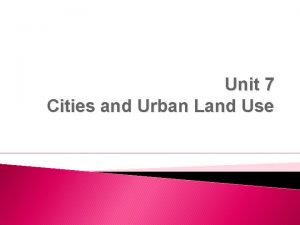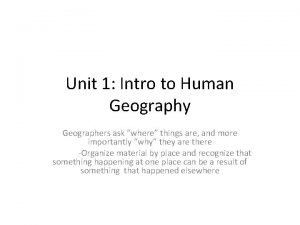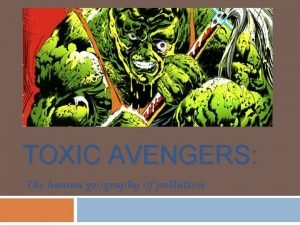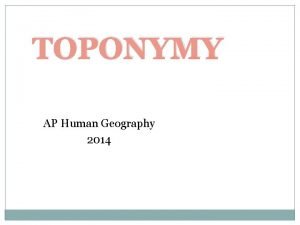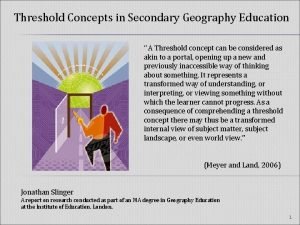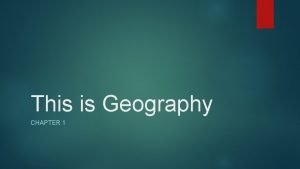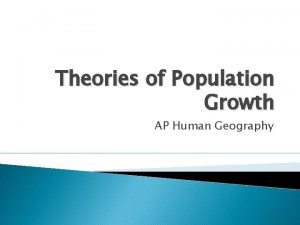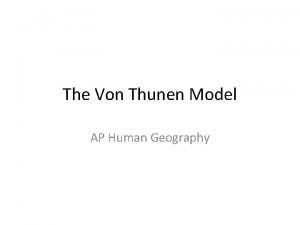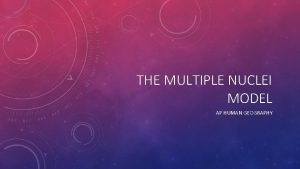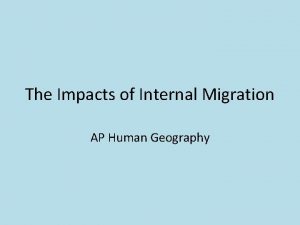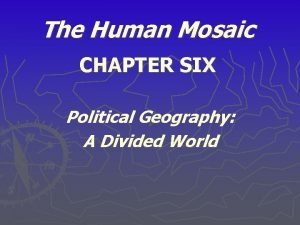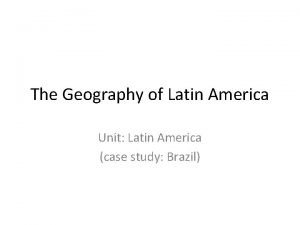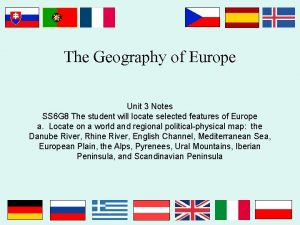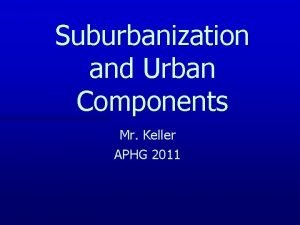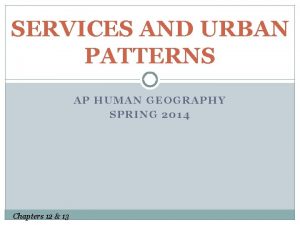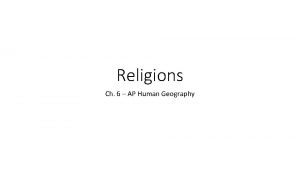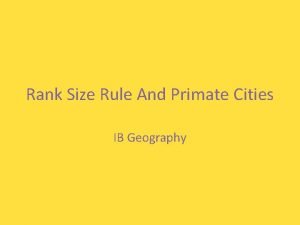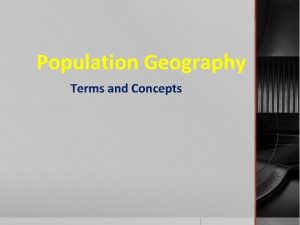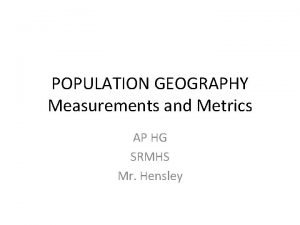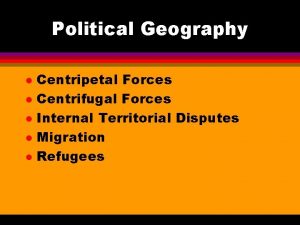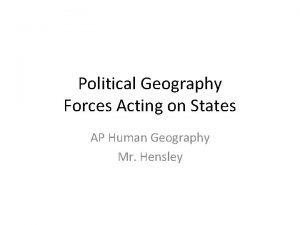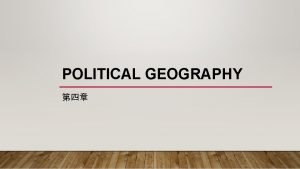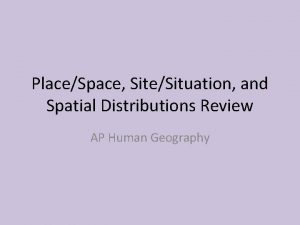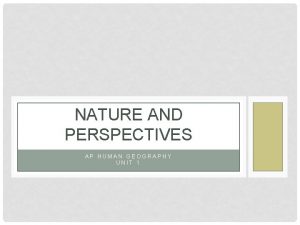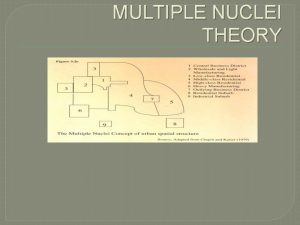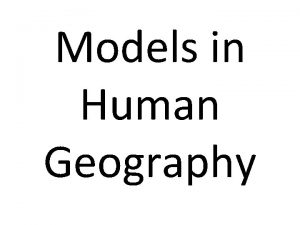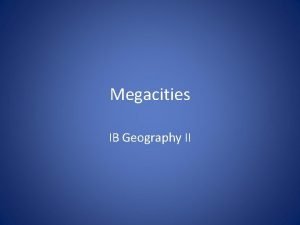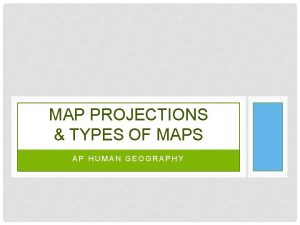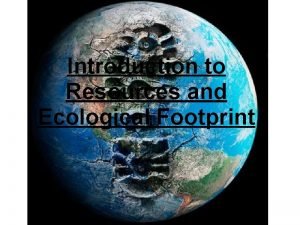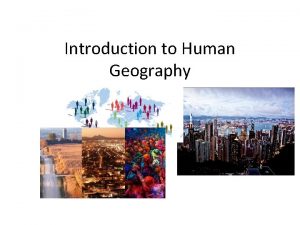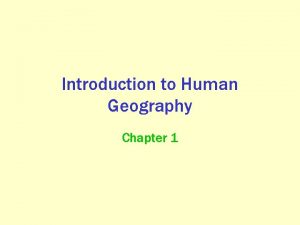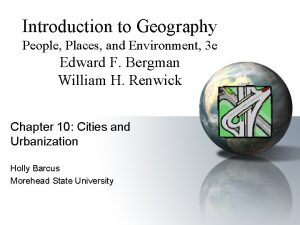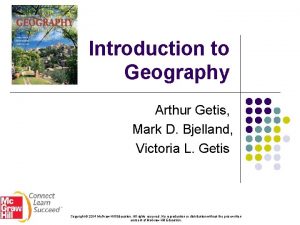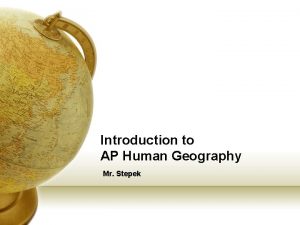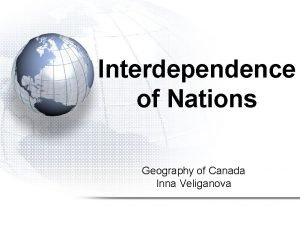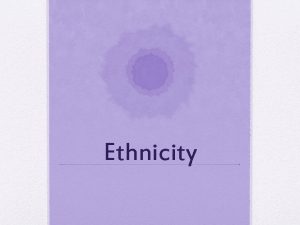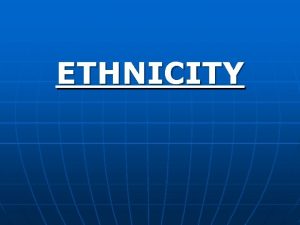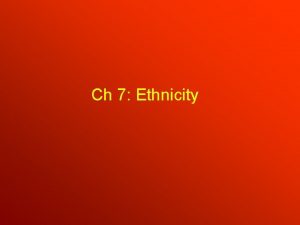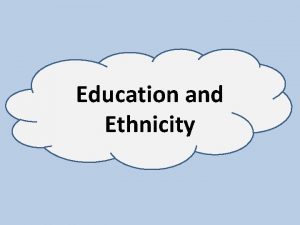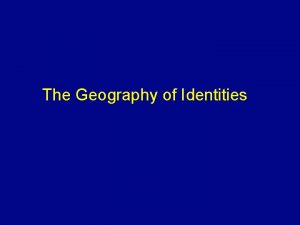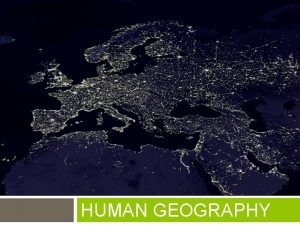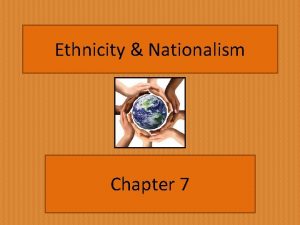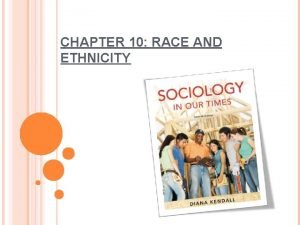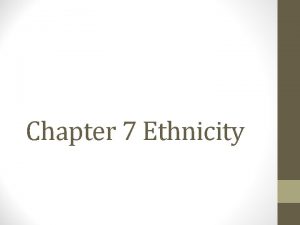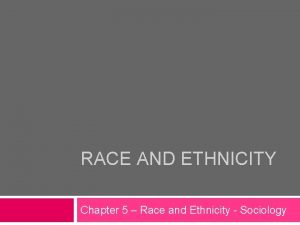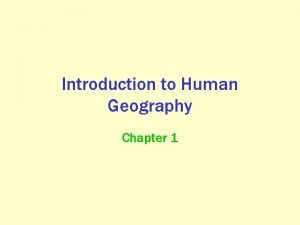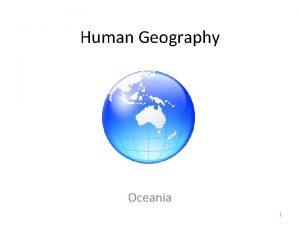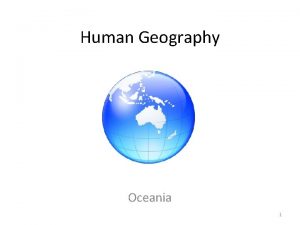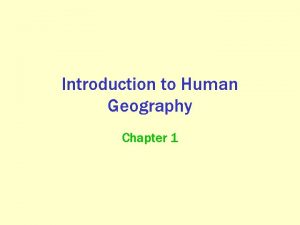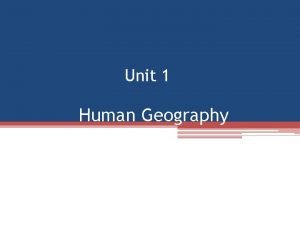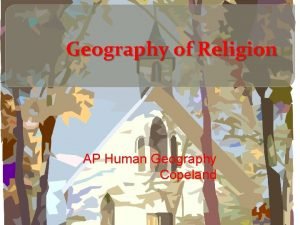AP Human Geography Chapter 7 Ethnicity Day 1























































































































- Slides: 119

AP Human Geography Chapter 7: Ethnicity

Day 1

Bellwork (1/7/2019): • How would you define ethnicity? • How have you felt defined (by yourself or others) by your ethnicity?

Agenda: • Ch. 7 KBAT • Notes: Distribution of Ethnicities • Suggested Line of Study: #1 -7, KBAT Map

But First: New Semester, New Us • Remember phone policy: Need to be kept away (quick use okay) • Homework will now be called Suggested Line of Study. It will NOT be collected for a grade, but it will help you perform on the test. • KBAT Maps will still be collected for points.

But First: New Semester, New Us • Test Re-Takes: You may re-take a test as much as you want. You will need to schedule the re-take with me outside of class time. • We will start having practice and test FRQs. The purpose behind these is to measure your APHG Essential Skill.

Fun Fact: • Elephants are the only mammals that can't jump

CHAPTER 7 ETHNICITY

I. ETHNIC DISTRIBUTION

A. Ethnicity 1. Definition: the identity with a group of people who share cultural traditions of a particular hearth

2. Ethnicity is NOT a. Race: social construct of the identity of a group of people who share biological ancestry • RACISM: one race is inherently better than others

Video: Myth of Race

Discuss in your tables: • Racial vs. Ethnic Discrimination in the US • Come up with 2 examples of each

B. Ethnicity in the USA 1. Official U. S. Bureau of Census a. Asks 2 questions about ethnicity b. Identifies 3 main ethnicities: • Asian American • African American • Hispanic

Official U. S. Bureau of Census 1. Check the box next to one or more of the following fifteen categories (pick yours) • White • • Black, African American, • or Negro • • American Indian or • Alaska Native • • Asian Indian • Chinese • • Filipino • • Japanese Korean Vietnamese Other Asian Native Hawaiian Guamanian or Chamorro Samoan Other Pacific Islander Other race

2. Respond to yes or no to being of Hispanic, Latino, or Spanish origin (pick your answer) • If yes pick on of these categories • Mexican, Mexican American, Chicano • Puerto Rican • Cuban • Another Hispanic, Latino, or Spanish origin

Discuss in your tables… • Do you identify more with your race or your ethnicity? • What would you identify as your main ethnicity?

VIDEO: What it’s like to be Ambiguously Ethnic

Discuss in your tables… • Think back to earlier chapters • In your notes, make a list of vocab words and ideas that might apply to this chapter • Yes, you can look at old KBATS

C. Ethnic Distribution in USA 1. Hispanics: Arizona, California, New Mexico, and Texas a. Los Angeles, Phoenix 2. African Americans: Georgia, Alabama, Mississippi; Northern cities a. Detroit, Chicago


3. Asian Americans: West – Hawaii, California a. Honolulu, San Francisco

4. Urban Distribution: a. African Americans and Hispanics in urban areas b. Ethnic neighborhood: an area in a city containing members of the same ethnic background

LOS ANGELES 

D. Reasons for US Ethnic Distribution

1. International Migration a. Forced Migration from Africa – Africans brought as slaves

b. Voluntary Migration from Latin America and Asia – Late 20 th/21 st century • 1970’s: – Hispanics: Mexico, Puerto Rico and Cuba – Asian: China, India, Philippines


DRAW THE USA • Leave space around it & in it • Use arrows to show where ethnicities came from & where they settled • Label the Who, From Where, To Where and Why

ASIANS From: China, Philippines, & India To: West Coast Why: Economics HISPANICS From: Mexico, Central/ South America To: South West Why: Economics AFRICANS From: West Africa To: South East Why: Slavery

2. Internal Migration a. African Americans – Interregional Migration • 1900’s: Southern Farms -> Northern Cities – Shrinking agricultural jobs, growing industrial jobs


Add to USA Map • Add the internal migration of African Americans • Label the Who, From Where, To Where and Why

AFRICAN AMERICANS From: Southern Farms To: North Cities Why: Jobs

Ticket Out the Door: • Define ethnicity in your own words. • Describe ethnic distribution in the United States. (2 -3 sentences using vocabulary) • Describe how international and internal migration lead to modern ethnic distribution in the USA.

Day 2

Bellwork (1/8/2019): • What nationality are you?

Agenda • Notes: Ethnicity Identity • Computer activity • HW: #8 -14, map

Objective • You will be able to describe the effect of nationalism and ethnic diversity in the world.

TUBI • Methemoglobinemia is a blood disorder that makes you blue

I. Ethnic Identity

A. Reasons for US Ethnic Distribution

1. International Migration a. Forced Migration from Africa – Africans brought as slaves

b. Voluntary Migration from Latin America and Asia – Late 20 th/21 st century • 1970’s: – Hispanics: Mexico, Puerto Rico and Cuba – Asian: China, India, Philippines


DRAW THE USA • Leave space around it & in it • Use arrows to show where ethnicities came from & where they settled • Label the Who, From Where, To Where and Why

ASIANS From: China, Philippines, & India To: West Coast Why: Economics HISPANICS From: Mexico, Central/ South America To: South West Why: Economics AFRICANS From: West Africa To: South East Why: Slavery

2. Internal Migration a. African Americans Interregional Migration – • 1900’s: Southern Farms -> Northern Cities – Shrinking agricultural jobs, growing industrial jobs


Add to USA Map • Add the internal migration of African Americans • Label the Who, From Where, To Where and Why

AFRICAN AMERICANS From: Southern Farms To: North Cities (ghettos) Why: Jobs

B. Nationality 1. Nationality: is the identity with a group with legal/personal attachment to a country a. Ethnicity vs. Nationality? CULTURE: language, religion, food, clothing LEGAL: voting, passport, civic duties

2. Nationalities in USA vs UK a. AMERICAN b. English, Welsh, Scottish, Irish


Discuss • How do we show nationalism in America?

C. Nationalism 1. Nationalism: pride in one’s country 2. How do you foster nationalism? – Symbols: flags/songs – Images: The Bald Eagle – Slogans: LAND OF THE FREE

3. Some nationalism is good, sometimes it is really bad 4. Centripetal force: attitudes that tend to unify and increase support 5. Centrifugal force: attitudes that tend to divide and decrease support

D. Ethnic Competition

1. Sri Lanka a. 3 major ethnicities: – Sinhalese: 74%, Buddhist – Tamils: 16%, Hindu – Moors: 10%, Muslim

Discuss • What is a good way governments can reassure/honor minority ethnicities?


E. Dividing Ethnicities 1. South Asia a. British rule in India ended in 1947 b. 2 ethnicities based on religion: Hindus and Muslims c. Division of country into India & West and East Pakistan (now Bangladesh) • Muslims in Pakistan & Bangladesh • Hindus in India

d. Migration Problems • In late 1940 s mass migration occurred • 7 million Muslims from India to Pakistan • 9. 5 million Hindus moved from Pakistan to India • Consequences: over 500, 000 killed in genocide

Video: Crash Course


2. Kurds a. 30 million Kurds split between Turkey, Iraq, Iran and Syria b. Who are the Kurds? • Sunni Muslims • Speak a language in the Iranian group • Feature distinctive literature, dress, and cultural traditions

Video: Who are the Kurds?

Discuss • We see ethnic conflict and extreme nationalism around the world. • Should the US address this? How?

Summary • Explain the difference between ethnicity and nationality. • Using an example, describe one way these two concepts have effected the world.

Day 3

Bellwork • MAP CHECK • Describe the ethnic distribution in the US.

Agenda: • Practice FRQ • HW: Quiz Friday

Objective: • You will be able to describe the difference between centripetal and centrifugal forces.

TUBI • On November 21, 1783 in Paris, France was a hot air balloon made of paper and silk made by the Montgolfier brothers.

Practice FRQ • Plan and Write both FRQ • Use neighbors, notes, FRQ Cheat Sheet • Write in Pen

Day 4

Bellwork • Write down two examples of genocide.

Agenda • Notes: Ethnic Conflict • HW: #21 -28, Quiz tomorrow

Objective: You will be able to summarize the motivation and effects of ethnic conflict.

TUBI • Since penguins don't leave the nesting areas to feed, some species go through the entire courtship, nesting, and incubation period without food or water. For male king penguins, this period lasts for 55 days. For the male emperor penguin, the fast can last up to 120 days.

I. Ethnic Conflict

A. Urban Distribution: 1. African Americans and Hispanics in urban areas 2. Ethnic neighborhood/enclave: an area in a city containing members of the same ethnic background

LOS ANGELES 

3. Blockbusting: convincing white families to leave b/c black families were moving in a. Leads to white flight

4. Segregation: Separating people, items or communities in law 5. Suffrage: The right to vote

B. South Africa 1. Apartheid: physical separation of different races in different geographic areas 2. Policies of institutionalized racial discrimination beginning in 1948 – – – Prevented intermarriage Created “white-only” jobs Took away citizenship from “Africans” Assigned to ethnic states called “homelands” Violent punishment of protesting

Discuss • What are some ways that the legacy of segregation and apartheid still effect the world today?

C. Definitions: 1. Ethnic cleansing: more powerful ethnic group removes a weaker one to create a homogenous region 2. Xenophobia: fear of foreigners

3. Self-determination: the process where people create their own country and constitution 4. Nation-state: A country with a dominant ethnicity that has been turned into a nationality

5. Multi-Ethnic vs. Multinational a. Multi-ethnic: more than one ethnicity in the country b. Multinational: country multiple ethnic groups that agree to coexist but recognize each other as distinct nationalities

Geographic Connections • What are some countries that are multi-ethnic? • What are some countries that are multi-national?

D. BALKANS

1. Yugoslavia a. Post-WWI Western Europe creates Yugoslavia b. Josip Broz Tito ruled the communist nation from 1953 -1980

c. Ethnic groups –Croats, Macedonians, Montenegrins, Serbs, and Slovenes –Bosnia—Herzegovina: mix of Serbs, Croats, and Bosnian Muslims


2. Ethnic Cleansing in Yugoslavia a. Post Tito there are ethnic tensions b. Bosnian Genocide (1992) • 8, 000 dead, 30, 000 forced migration c. International economic pressure ends it

d. Balkanization: a state breaks down b/c of internal ethnic conflict

e. Cultural Shatterbelt: A politically unstable region where differing cultural elements come into contact and conflict.

f. Genocide: mass killing of a group of people to eliminate them from existence

Video: CNN- Genocide WARNING

Discuss • Think about what you saw about Bosnia and Kosovo in the video, how does this reflect ethnic conflict?

C. SUBSAHARAN AFRICA 1. Colonial legacy a. Europe created nations without thinking about tribes and ethnicities b. Historic enemies are now neighbors

3. Sudan a. South Sudan: Christians and animists resisting Muslim government – 1. 9 million dead – 2011: independent country, Now: in a civil war

b. Darfur: • 2 non-Arab rebel groups based in Darfur region – b/c gov not providing for minority • Gov. funded/armed militia attacks Darfur civilians • 480, 000 dead, 2. 8 million refugees

4. Rwandan Genocide a. Hutus: farmers, Tutsis: herders b. 1994: Hutu president murdered – In retaliation: Hutus start murdering Tutsis – 800, 000 dead c. Spilled into Congo (5. 4 million dead)


Video: A Very Short History

Summary: • Explain the difference between ethnic cleansing and genocide. • Describe the causes and effects of ethnic cleansing using an example.

Video: Danger of Silence

Day 5

Bellwork • Name 4 countries and capitals that border the Mediterranean Sea from the map. • Name 2 countries that are landlocked. • Name 3 countries that border the Atlantic Ocean.

Agenda: • Quiz

Objective: • You will be able to describe the difference between centripetal and centrifugal forces.

QUIZ • Write clearly • Capital, Country on Map • Done? No Tech, No Naps

Day 6

Bellwork: • What’s the main motivation of genocide for its leadership and participants? Are those motivations different?

Agenda: • Test Review • HW: Study

TUBI • Robot comes from the Czech word robota, meaning forced labor or drudgery. In a 1920 play, human-like mechanical creatures produced in a factory are docile slaves.

Practice Multiple Choice • Find a partner • Write 4 MULTIPLE CHOICE QUESTIONS • (needs 5 choices, A B C D E) – All the following is true about _______ EXCEPT – _______ is an example of – An example of __________ is – From what we know about _______ we can assume
 Nationality ap human geography definition
Nationality ap human geography definition Day 1 day 2 day 3 day 4
Day 1 day 2 day 3 day 4 Day 1 day 2 day 817
Day 1 day 2 day 817 Ap human geography political geography frq
Ap human geography political geography frq 5 themes of geography ap human geography
5 themes of geography ap human geography Stateless nation
Stateless nation Chapter 8: race and ethnicity as lived experience
Chapter 8: race and ethnicity as lived experience Gni definition ap human geography
Gni definition ap human geography States i have been to
States i have been to What is ethnicity
What is ethnicity Troian bellisario ethnicity
Troian bellisario ethnicity What is ethnicity
What is ethnicity Symbolic interactionism vs functionalism
Symbolic interactionism vs functionalism Symbolic ethnicity
Symbolic ethnicity Ethnicity in sociolinguistics
Ethnicity in sociolinguistics Lactose intolerance by country
Lactose intolerance by country Ethnicity examples
Ethnicity examples Ethnicity definiton
Ethnicity definiton Ethnicity in postcolonialism
Ethnicity in postcolonialism Multiethnic state definition
Multiethnic state definition Baltic ethnicity
Baltic ethnicity Taylor swift's blood type
Taylor swift's blood type Avian ku ethnicity
Avian ku ethnicity Race vs ethnicity vs nationality
Race vs ethnicity vs nationality Is blood type inherited
Is blood type inherited Bitwit ethnicity
Bitwit ethnicity Is hispanic an ethnicity
Is hispanic an ethnicity Is hispanic an ethnicity
Is hispanic an ethnicity Louis molina ethnicity
Louis molina ethnicity Tower hamlets ethnicity
Tower hamlets ethnicity Blockbusting ap human geography
Blockbusting ap human geography What is cultural assimilation
What is cultural assimilation Johnny cash first wife
Johnny cash first wife Nose
Nose Gordon lightfoot ethnicity
Gordon lightfoot ethnicity Isc ethnicity
Isc ethnicity Ap human geography chapter 11 vocab
Ap human geography chapter 11 vocab Chapter 16 a diverse heritage
Chapter 16 a diverse heritage Chapter 22 human geography of southwest asia
Chapter 22 human geography of southwest asia Chapter 11 ap human geography
Chapter 11 ap human geography What influenced mexico's political and social structures
What influenced mexico's political and social structures Toponyms definition ap human geography
Toponyms definition ap human geography Chapter 13 human geography of europe
Chapter 13 human geography of europe Chapter 5 key issue 1 ap human geography
Chapter 5 key issue 1 ap human geography Why is the united states called a postindustrial economy
Why is the united states called a postindustrial economy Chapter 25 human geography of south asia
Chapter 25 human geography of south asia Chapter 19 human geography of africa
Chapter 19 human geography of africa Human needs and human development
Human needs and human development Chapter 8 human needs and human development
Chapter 8 human needs and human development William beanes elementary school
William beanes elementary school Haiku and
Haiku and Day to day maintenance
Day to day maintenance Physical science chapter 6 review answers
Physical science chapter 6 review answers Tomorrow i dont know
Tomorrow i dont know Romeo and juliet act 1 timeline
Romeo and juliet act 1 timeline Growing day by day
Growing day by day Seed germination inhibitors examples
Seed germination inhibitors examples Seed germination conclusion
Seed germination conclusion Seeds vs spores
Seeds vs spores I live for jesus day after day
I live for jesus day after day Casting crowns dying he saved me
Casting crowns dying he saved me Day one day one noodle ss2
Day one day one noodle ss2 Dayone dayone ss2
Dayone dayone ss2 Whats round robin
Whats round robin Geography lines
Geography lines Alpha beta gamma cities ap human geography
Alpha beta gamma cities ap human geography Anocracy ap human geography definition
Anocracy ap human geography definition Least cost theory examples
Least cost theory examples Von thunen
Von thunen Rectangular survey system ap human geography
Rectangular survey system ap human geography Ranching definition ap human geography
Ranching definition ap human geography Township and range aphg
Township and range aphg Bid rent theory example
Bid rent theory example Second urban revolution ap human geography
Second urban revolution ap human geography Central place theory definition geography
Central place theory definition geography Technopole ap human geography
Technopole ap human geography Modernization model ap human geography
Modernization model ap human geography Multiethnic state definition
Multiethnic state definition Functional region
Functional region Chicago multiple nuclei model
Chicago multiple nuclei model Geri flanary
Geri flanary Cultural ecology ap human geography
Cultural ecology ap human geography Environmental injustice definition ap human geography
Environmental injustice definition ap human geography Post revolution toponyms examples
Post revolution toponyms examples Geography threshold concepts
Geography threshold concepts The geometric arrangement of objects in space
The geometric arrangement of objects in space Ernst ravenstein ap human geography
Ernst ravenstein ap human geography Bid rent theory model
Bid rent theory model Who developed the multiple nuclei model
Who developed the multiple nuclei model Remittances ap human geography
Remittances ap human geography Cleavage model ap human geography
Cleavage model ap human geography Pampas definition ap human geography
Pampas definition ap human geography Natural boundary ap human geography
Natural boundary ap human geography Territorial morphology
Territorial morphology Suburbanization definition aphg
Suburbanization definition aphg Linear settlement ap human geography
Linear settlement ap human geography Denomination ap human geography
Denomination ap human geography Paris primate city
Paris primate city Demographic momentum ap human geography definition
Demographic momentum ap human geography definition Imr human geography
Imr human geography Postmodern architecture
Postmodern architecture Subnationalism ap human geography
Subnationalism ap human geography Example of centripetal force ap human geography
Example of centripetal force ap human geography Eez ap human geography example
Eez ap human geography example Centripetal force geography
Centripetal force geography Definition of time space convergence ap human geography
Definition of time space convergence ap human geography Globalization definition ap human geography
Globalization definition ap human geography Mathematical location ap human geography
Mathematical location ap human geography Multiple nuclei model
Multiple nuclei model Distance decay ap human geography
Distance decay ap human geography Step migration definition ap human geography
Step migration definition ap human geography Mega city definition ap human geography
Mega city definition ap human geography Map projections ap human geography
Map projections ap human geography Ecological footprint definition ap human geography
Ecological footprint definition ap human geography What is human geography
What is human geography Sequent occupance
Sequent occupance New urbanism ap human geography
New urbanism ap human geography Absolute direction ap human geography
Absolute direction ap human geography Mr stepek
Mr stepek Inna model
Inna model
